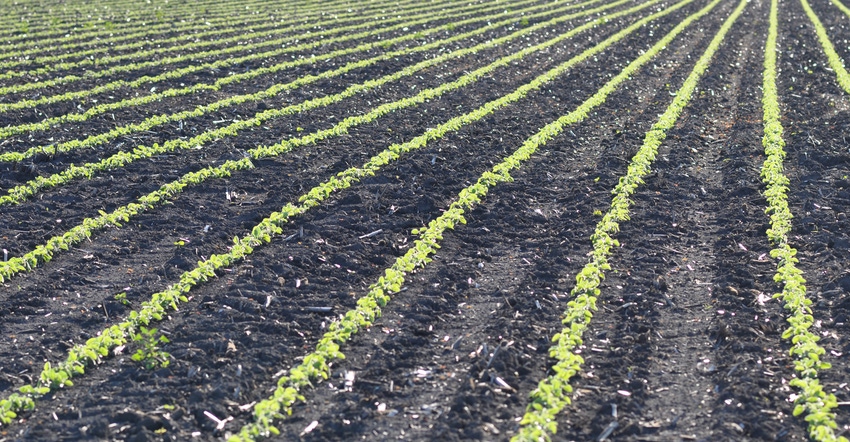March 20, 2018

By Ross Albert
As I work with landowners and tenants to build long-term management plans, we almost always talk about conservation — and specifically, what they can do to improve the farm’s health through cover crops, reduced tillage and water drainage.
As a manager of someone’s assets, I tend to link conservation to asset preservation. More specifically, we talk a lot about the use of cover crops, reduced tillage and water drainage. There are four key benefits I look to achieve when building a conservation plan, while keeping in mind the challenges that might arise.
1. Reduce surface water to reduce erosion. The most valuable possession on any farm is the top 6 to 12 inches of the soil profile. Anytime I walk a managed farm and see soil that has moved, I immediately begin formulating a plan to stop this movement. How can I get water into the ground and off the surface — where it has the most potential to move soil?
Field tile is often the answer. Most people think tile only has value in low-lying areas; however, I’ve found it’s just as important to drain the sidehills as it is to drain the draws. The sooner we get water in the ground, the less potential it has to erode soil. This, paired with reduced tillage and the use of cover crops, can substantially reduce soil erosion.
2. Increase water-holding capacity. Cover crops and reduced tillage can help increase water-holding capacity. Cover crops such as ryegrass can improve organic matter and soil structure, thus increasing water-holding capacity. Think about how it feels to walk on a grassed yard after a large rain compared to a bare piece of ground. The grassed yard can take on a “sponge” effect, while the bare soil may feel compacted and have more water runoff.
It’s an eye-opener to watch water infiltration tests on different types of management practices. My experience has shown that the cover crop and no-till scenario will show a much quicker infiltration rate, with that spongelike effect.
3. Improve soil fertility. I had read articles discussing how using cover crops can improve soil fertility, but I was somewhat skeptical until I saw it firsthand on a managed farm. This farm has had continuous cover crops since 2012. Recent soil tests show a significant increase in fertilizer-availability levels when fertilizer has been applied based on basic removal levels. I can’t say I fully understand the chemistry behind why fertility levels have increased so much, but the soil tests prove that it has.
4. Increase weed control. Cover crops have also helped control weeds. We are all aware of the challenges associated with resistant weeds. Our experience has shown that cover crops such as ryegrass are suppressing weed pressures significantly. While cover crops aren’t free, they may be cheaper than added herbicide expenses to keep that farm clean otherwise.
As important as it is to understand the benefits of cover crops, you have to understand their limitations, too. I do not see cover crops being a fit on every acre. If your farm does not have a problem with weed control, erosion, water-holding capacity or fertility, implementing some of these conservation practice may not be beneficial. If you have a farm that you think is a fit, test the practice on a small scale first to make sure benefits outweigh costs. Think about a farm’s long-term health.
Seeing is believing, and I have found both success and failures with different conservation practices — but the successes have been large enough to encourage me to share with others.
Look at your farm as a long-term asset, and consider a plan that preserves its integrity, even if means giving up a little profitability upfront.
Albert is a farm manager with Soy Capital Ag Services, Bloomington, Ill. He is a member of the Illinois Society of Professional Farm Managers and Rural Appraisers, whose members regularly contribute to this column. Email farm management questions to Carroll Merry at [email protected].
You May Also Like




